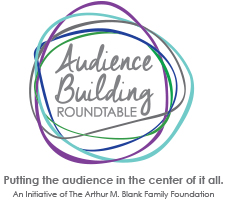By Adam Fristoe, Out of Hand Theater
Thanks to a scholarship provided by the Arthur Blank Family Foundation’s Audience Building Roundtable, Out of Hand Theater’s Co-Artistic and Marketing Director Adam Fristoe was able to attend the 2018 National Arts Marketing Conference in Seattle, Washington.
Over the past five years, Out of Hand has focused our work toward social justice, civic engagement and community building in Metro Atlanta. In Seattle, Washington, both the city and King County have policies in place that make a commitment to equity, in particular to racial equity, including taking into account historical inequities. In Seattle, I was specifically looking for guidance and best practices in implementing such a commitment at Out of Hand, as well as for strategies to advance advocacy for these policies in Atlanta.
Two sessions in particular stood out at the conference:
Crossing the Intersection of Race, Equity and Advocacy in the Arts
In recent years, government bodies, funders and arts organizations have encouraged efforts to increase diversity in audiences, artists and staff. In my experience, while many organizations take the encouragement seriously, many of us find ourselves floundering for tools and strategies to truly succeed. Here are some ideas:
Let’s commit to equity first, and make sure that people of color are decision makers and programmers in our arts organizations. Even though there has been progress in community engagement and in diversity in the audiences of our large arts organizations, that diversity is greatly lacking in our leadership and staff as a whole. This is true at Out of Hand and we are taking strategic steps to remedy the situation.
Let’s create equity task forces inside our organizations and integrate the language of equity and equity storytelling into our meetings and into the fabric of our organizations.
Let’s advocate for equity at the local, county, and state level, and model this commitment in our own work.
Disrupting Biased Marketing Systems and Building Diverse Audiences
Marketers traditionally analyze data, create look-a-like audiences based on sales success, then market to audiences that are, well, look-a-likes. This practice, while effective for generating revenue, has resulted in audiences that are older, whiter and more affluent than the population at large. Sound familiar? Is this an example of systemic racism? To counteract this trend, Arts Boston’s Audience Lab initiative has been working to “borrow tools and strategies from the world of issue-oriented political advocacy to create an innovative approach to finding and engaging audiences of color.”
As we commit to equity in our organizations, we must find alternative ways to build our marketing demographics. In addition to our shared ticket buyer data, we can look to other information sources, like those utilized by political action networks and voter registration drives, which can be accessed using the Voter Activation Network (VAN) database. Rather than pursuing audiences who look like our current audiences, we should seek audiences who wouldbe likely to buy ticketsif:
Our offerings and our organizations truly reflect a more diverse audience all the time.
We follow data points to reach diverse audiences that are “likely” to care about a particular subject.
We commit to equity in our leadership, programmers, and programming.
In conclusion, there are no simple solutions offered here. Commitment to equity may require people in power (like me) to step aside, or to find and commit additional funds to hire new positions, to ensure real decision-making power and opportunity for people of color. It may be hard to find ways to adjust marketing practices to combat the unintentional reinforcing of non-diverse audiences, but we must persevere and share our findings with each other if we are to realize the Beloved Community.
